Dedicated panoramic cameras tend to be a bit pricey. This Lomography Spinner 360° is refreshingly affordable. It retails new for £89 on the Lomography website. I bought a shop-soiled copy from a popular auction site for a bit less than that (because I’m a cheapskate). At some point, someone seems to have decided on a dolphin logo for this camera. I’m not sure what relevance the Dolphin has to panoramic photography, but it doesn’t detract from form or function.
Construction
This is a sub-£100 specialist camera. I didn’t expect a lot. In truth, I was quite impressed, although I was puzzled by some stuff.
The main body and grip are made of quite solid plastic. I was never worried that stuff was going to fall apart. It all seems more light-tight than I thought I had the right to expect.
The back does not spring open as maybe the designer expected. There is a spring-loaded latch, but it doesn’t quite have the ‘oomph’ to spring the back open. However, deploy the latch and prise the back open and everything is rosy. Far better than the back opening too easily.
Inside, the film take-up is quite simple. The film exits the cassette, and is held against a roller in front of a slit. A hook on the take-up spool anchors the film and makes sure it winds on. Two bits of fabric (one on the door and one in the body of the camera), act together to protect the film from light and scratches.
The camera and grip are covered in a regular knobbly finish, which gives a reasonable grip. The lens hood is surprisingly solid and made of metal.
Included in the box is a spare drive belt and what appears to be a 52 mm lens cap featuring that same regular knobbly finish as the camera body. I’m not quite sure why it is there. It doesn’t fit anywhere near the lens hood. I guess there may have been a change of specification at some point?
Concept
The Lomography Spinner 360° is a panoramic camera that works by passing film past a slit with a lens in front of it to form an image on film.
It works like a scanner. It exposes a narrow slit of film at any one time. You get no assistance in working out what your resulting negative is going to look like, but as each exposure is a (brief) time recording and covers over 360°, anything like a viewfinder would be very approximate.
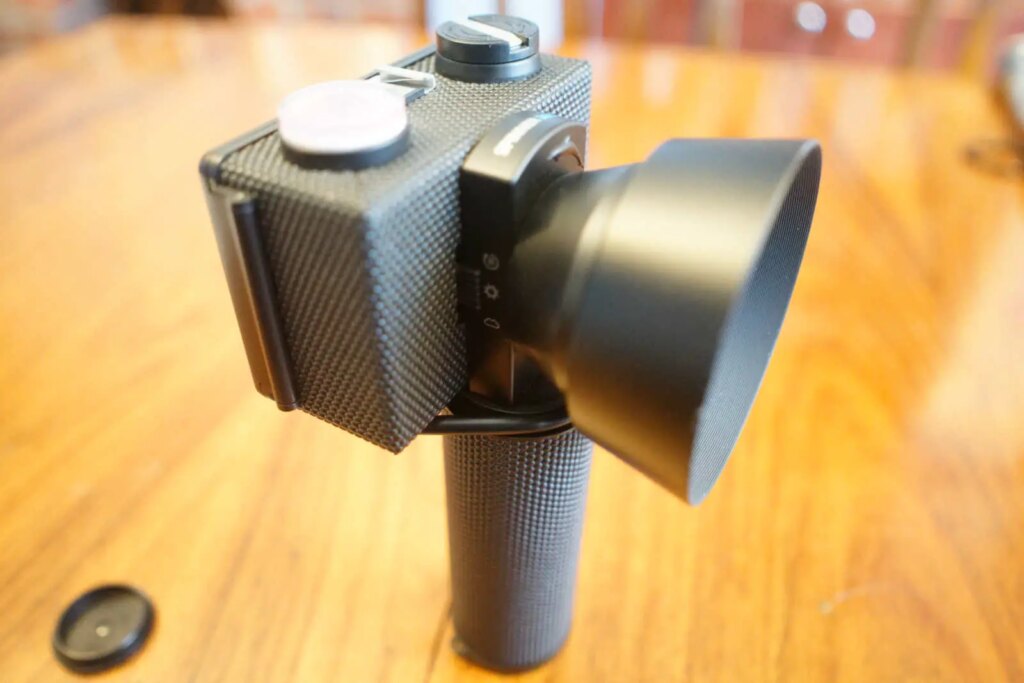
There is no shutter release. In effect, there is only a film wind, controlled by the pull cord.
At rest, with one of the two apertures selected (there is also a blank option for when you rewind the film) a small slit of film is exposed to the light. This line on the negative strip will be your indicator of the start and end of each exposure.
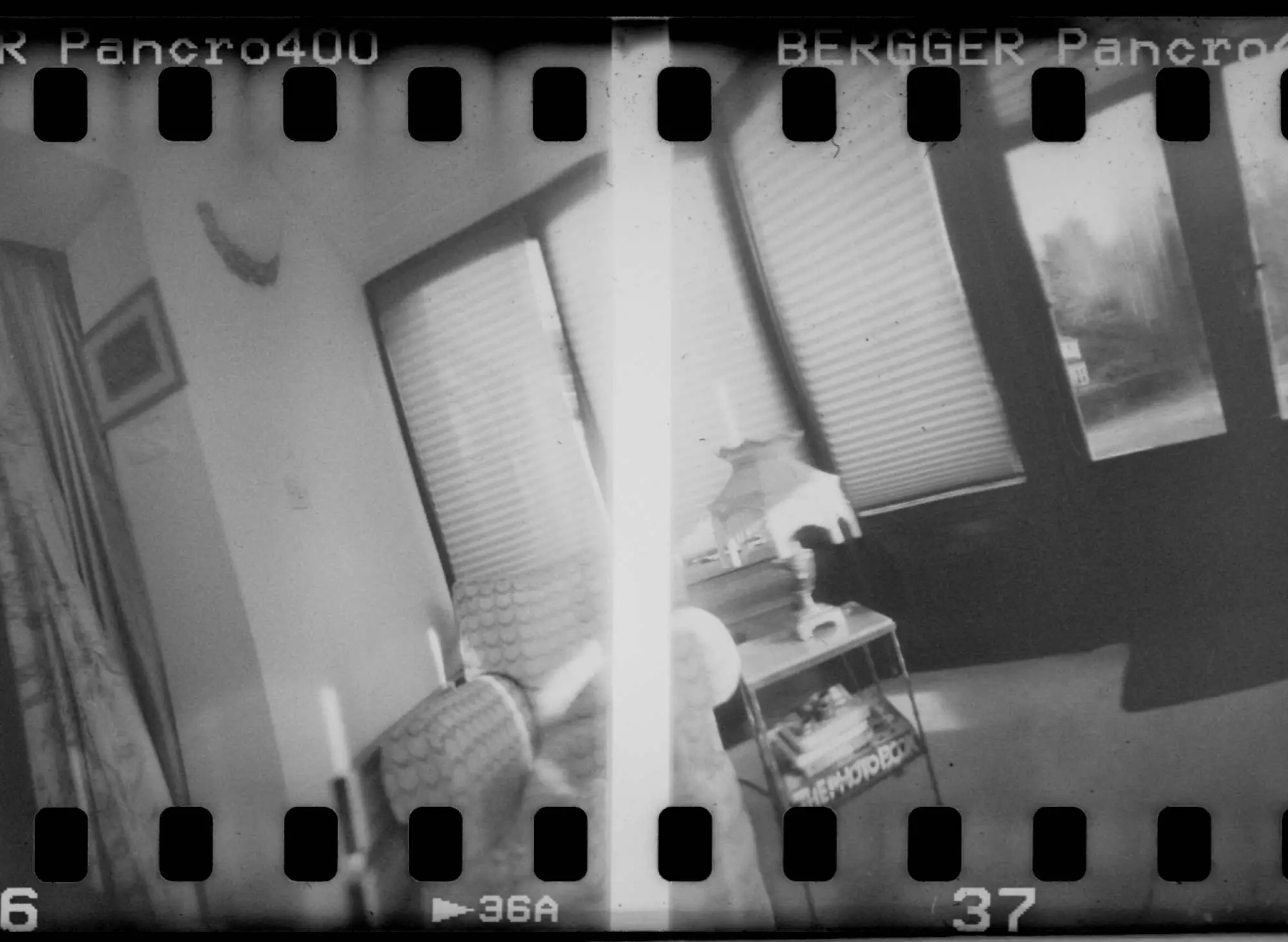
Lomography Spinner 360° Controls
Controls are sparse. You get:
- A latch to open the back
- A cold shoe (for a modelling light?)
- A rewind crank
- A selector for aperture (or no aperture)
- A pull cord
- A tripod socket
- A spirit level
Included with the Lomography Spinner 360° are various cardboard inserts that give ideas about how you might use the Spinner. These are very useful, at least as a way of getting your mind working about interesting ways to use the camera.
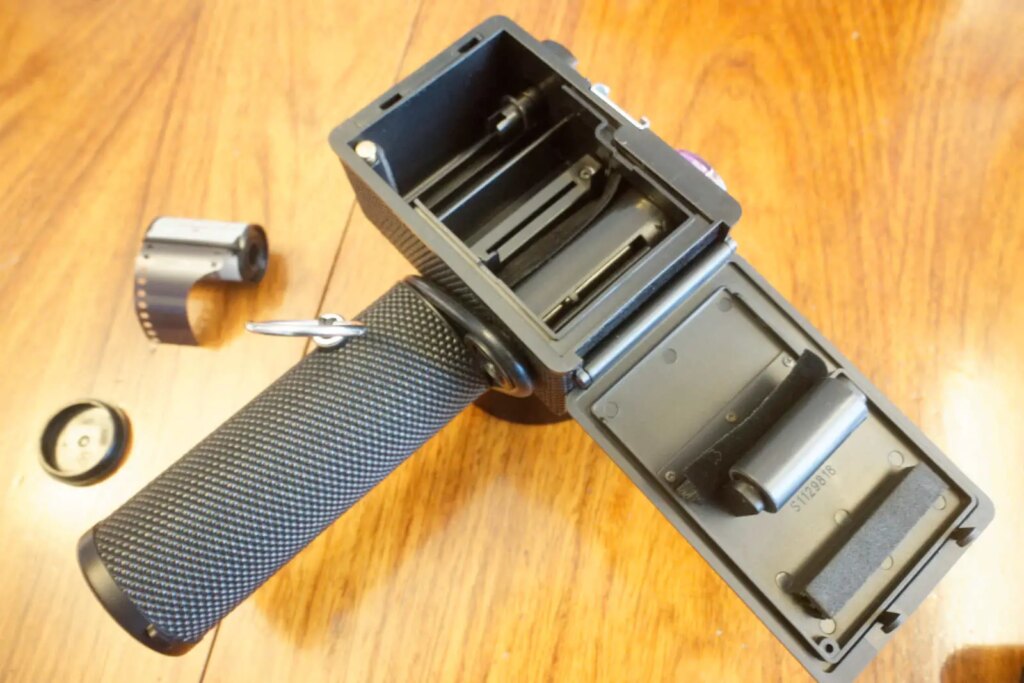
Operation
You set the aperture control to sunny (f/16) or cloudy (f/8), pull out the cord and release. The exposure begins there, spinning the head of the camera and simultaneously pulling fresh film out of the cassette and past the slit. The effective shutter speed is supposed to be somewhere between 1/125 and 1/250.
Although it is called the 360, there is nothing to ensure that each exposure will cover 360°. In practice, I found that I was getting about 400° of travel about halfway through the film. It appears that the reduced torque from the wind-on-spool as the film wraps around lessens the amount of over-run at the end of a roll. I think my last panorama on the roll probably just managed 360°. I’m guessing the degree of over-run is likely to change as the mechanism ages. It doesn’t really matter, if you want exactness, I regret to inform you that we are no longer in Kansas.
It is difficult to stay out of the shot, although if you start with the lens towards your face, you can more easily crop yourself off the start and end of the frame later. Note that if you mount the camera on a tripod, the torsion you get when you pull the cord out means you need to have the locks on the tripod set quite stiffly.
There is no film counter on the Lomography Spinner 360°. The indication that the film has come to an end is that the camera stops mid-spin.
Remember to set the aperture control to ‘R’ before winding the film back into the cassette. Setting to ‘R’ stops light entering the camera through the lens. If you forget to do this, you will re-expose the entire film as it is wound back into the cassette.
Results
I was quite surprised to get reasonable results from my first film, which I had regarded as being quite experimental. Because I wasn’t quite sure of the exposures, I used stand development. This gave a slight bromine drag, but generally the results were very good.
Digitizing
My Plustek 135i scanner has a panorama mode. Unfortunately, the full-length panorama negative holder I reviewed went back to Plustek a while ago. After reviewing that holder, I did modify my standard holder, keeping a single bar halfway along, but the spinner produces negatives that are longer than that. In the end I solved my problem by scanning twice, with the bar in slightly different places, and then stitching. This worked well but did seem to be a little against the spirit of the camera.

One thing that I noticed once the film was developed is that not only does the Lomography Spinner 360° produce very wide frames, but also that it exposes across the entire film, including the sprockets. To try to capture the whole picture I ended up using my little LED light pad along with a glass sheet to hold the negative strip flat in order to digitize using a camera. I lost a good deal of resolving power because of the width of the negative, but I tried to minimize this by shooting the negative strip across the diagonals of the frame, straightening the resultant image later in post.
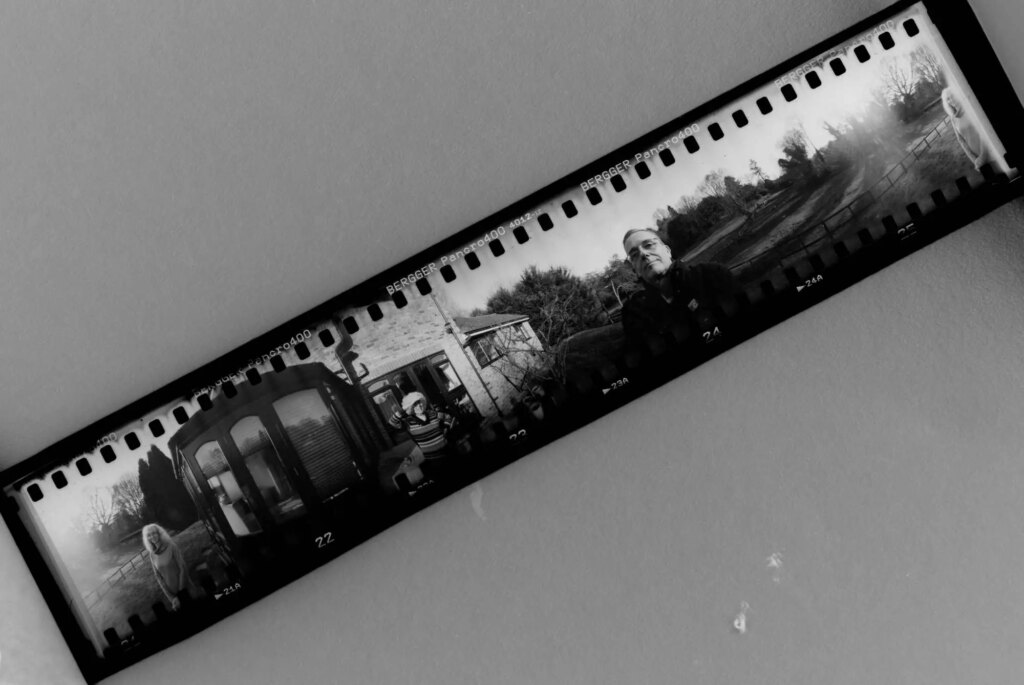
Sample Pictures



Conclusion
I’ve had a long term interest in shooting panoramas. Having said that, getting the Lomography Spinner 360° was a bit of an indulgence (even at half-price). I hadn’t expected for it to work so well. It might end up costing me more in film than I’d anticipated.
Lomography use a line on their website describing this camera as having ‘rubber band drive’. Technically this is true, but I think they do the camera a disservice as it gives the impression of something that is much flimsier and less durable than it is in reality. Yes, the camera is driven by a rubber belt, but I’m pretty sure that the power in the grip is being supplied by a spring, or at least something more durable than a rubber band. Still, that’s marketing people for you: I guess they know who they think they are selling to.
I find myself wondering if it might be possible to attach an electric motor to give a bit more control and the possibility of remote operation. However for the time being I’ll content myself with exploring the possibilities this interesting camera opens up.
Share this post:
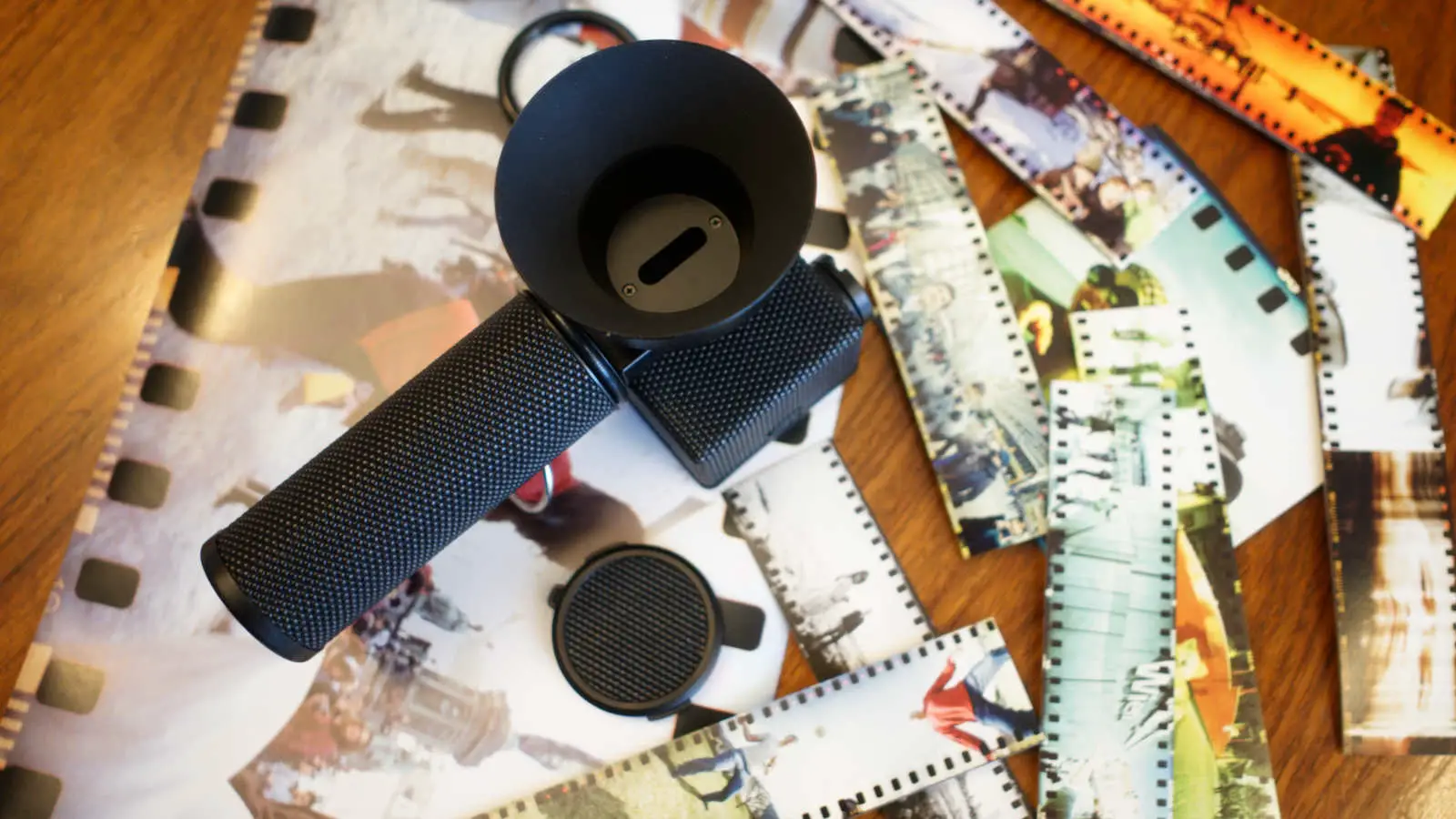








Comments
Fabio on Lomography Spinner 360° review – Analogue Panorama Shots on the Cheap
Comment posted: 04/04/2023
There is a motorizer product by Lomography http://microsites.lomography.com/spinner-360/motorizer/
But it is out of stock, unfortunately.
Thanks for sharing!
Comment posted: 04/04/2023
Huss on Lomography Spinner 360° review – Analogue Panorama Shots on the Cheap
Comment posted: 06/04/2023
Interestingly enough, people on ebay are asking more for used ones than you can buy them new at the Lomography store.
Also, this is Huss posting. For some reason the comment shows "Kurt Ingham" with his email address. No idea who that is.